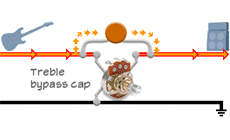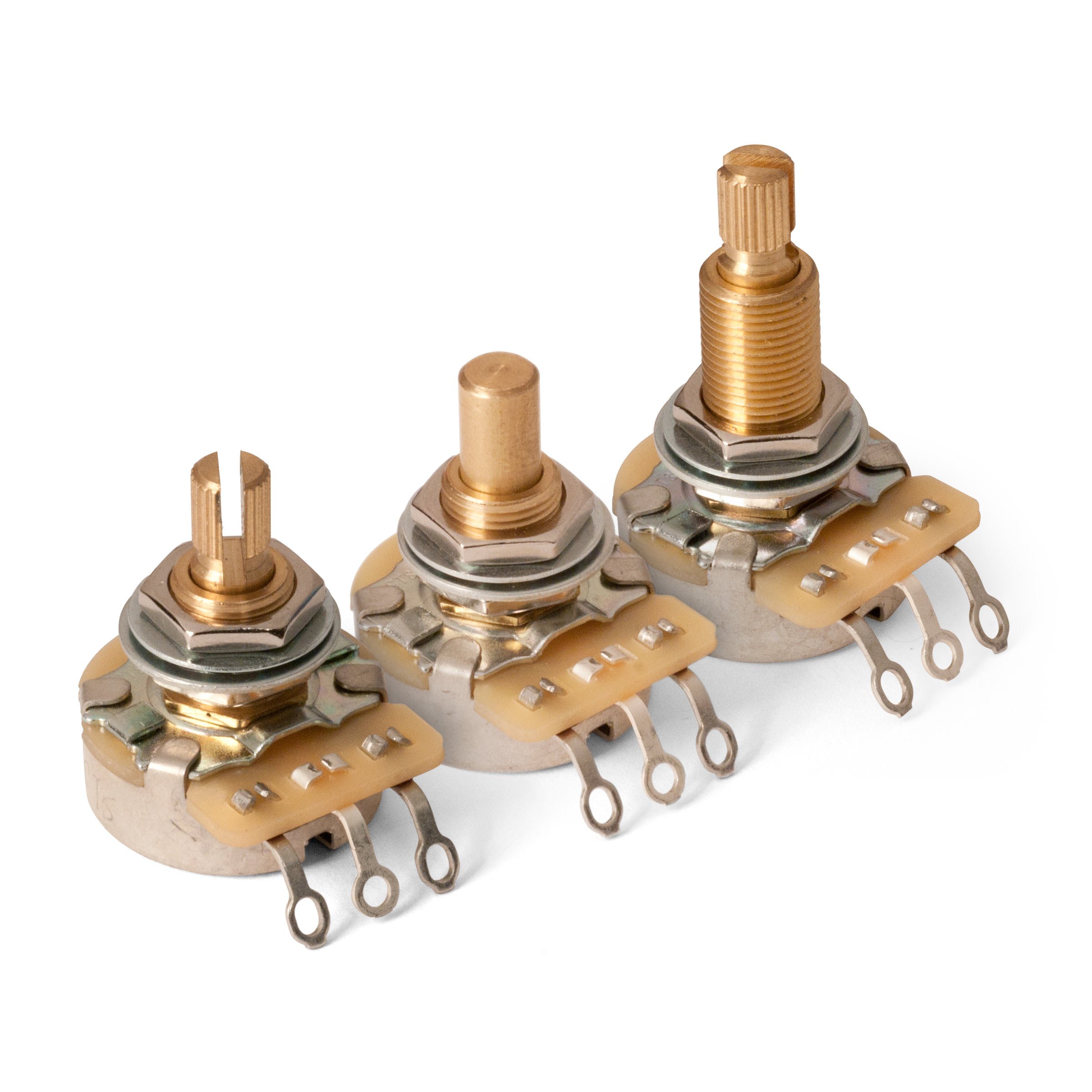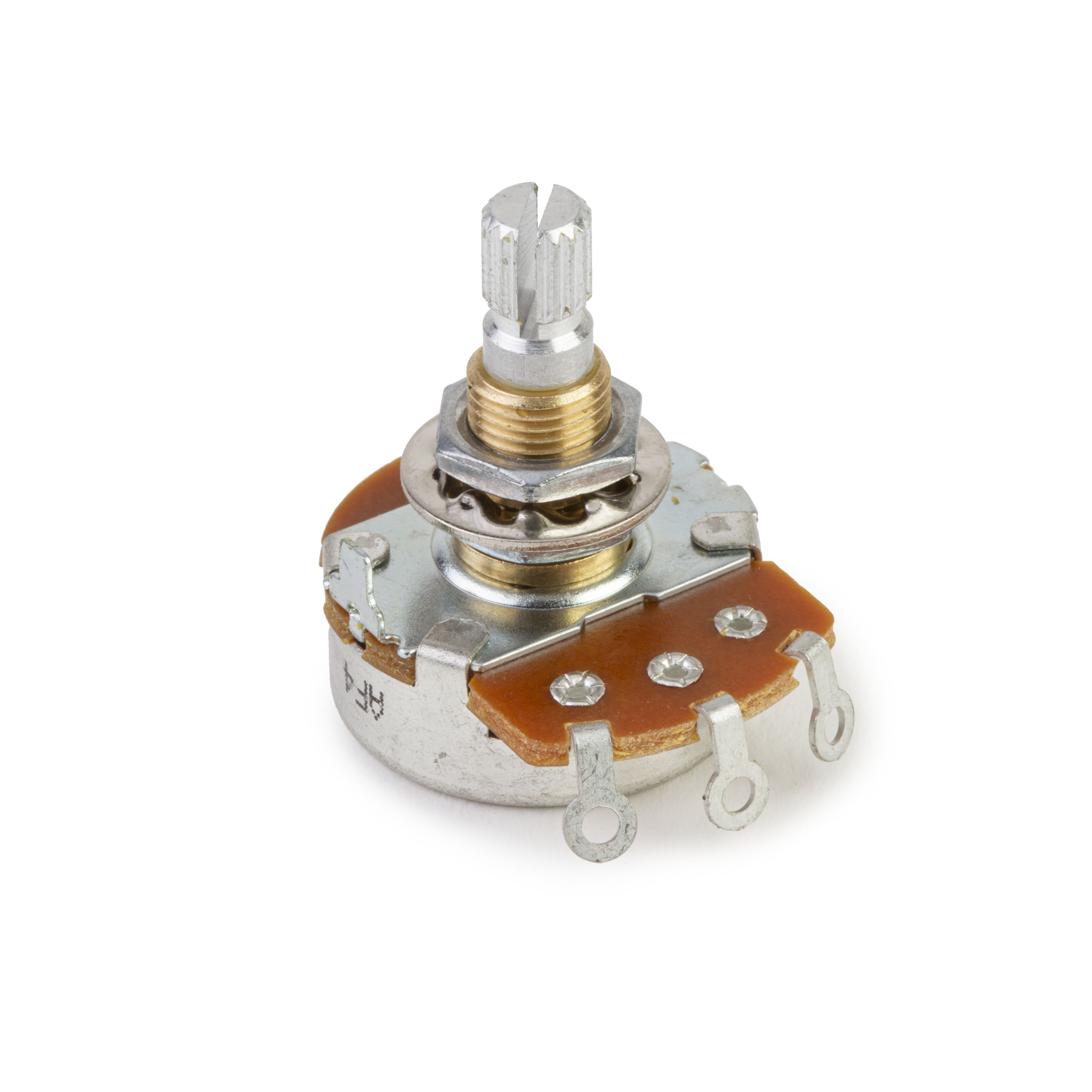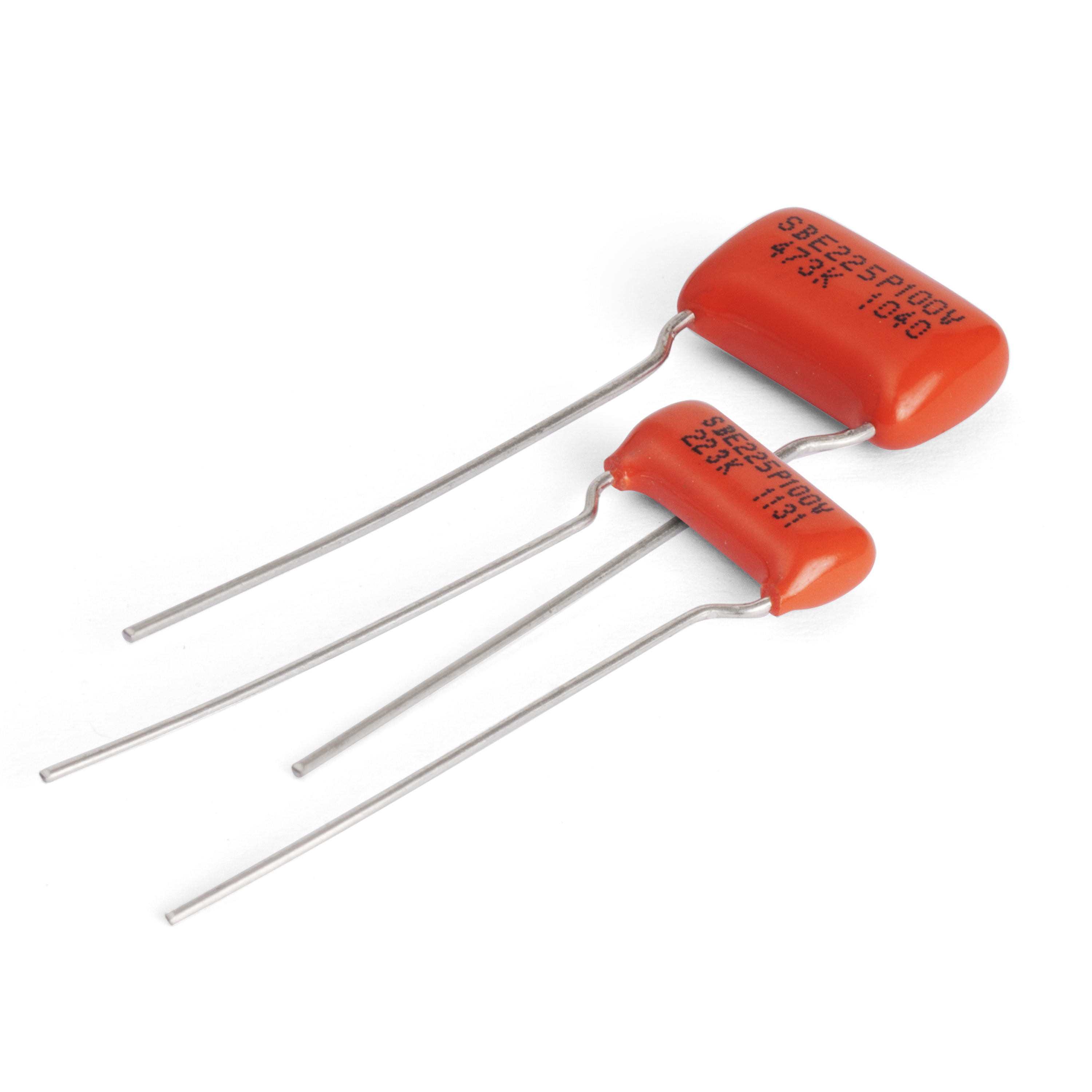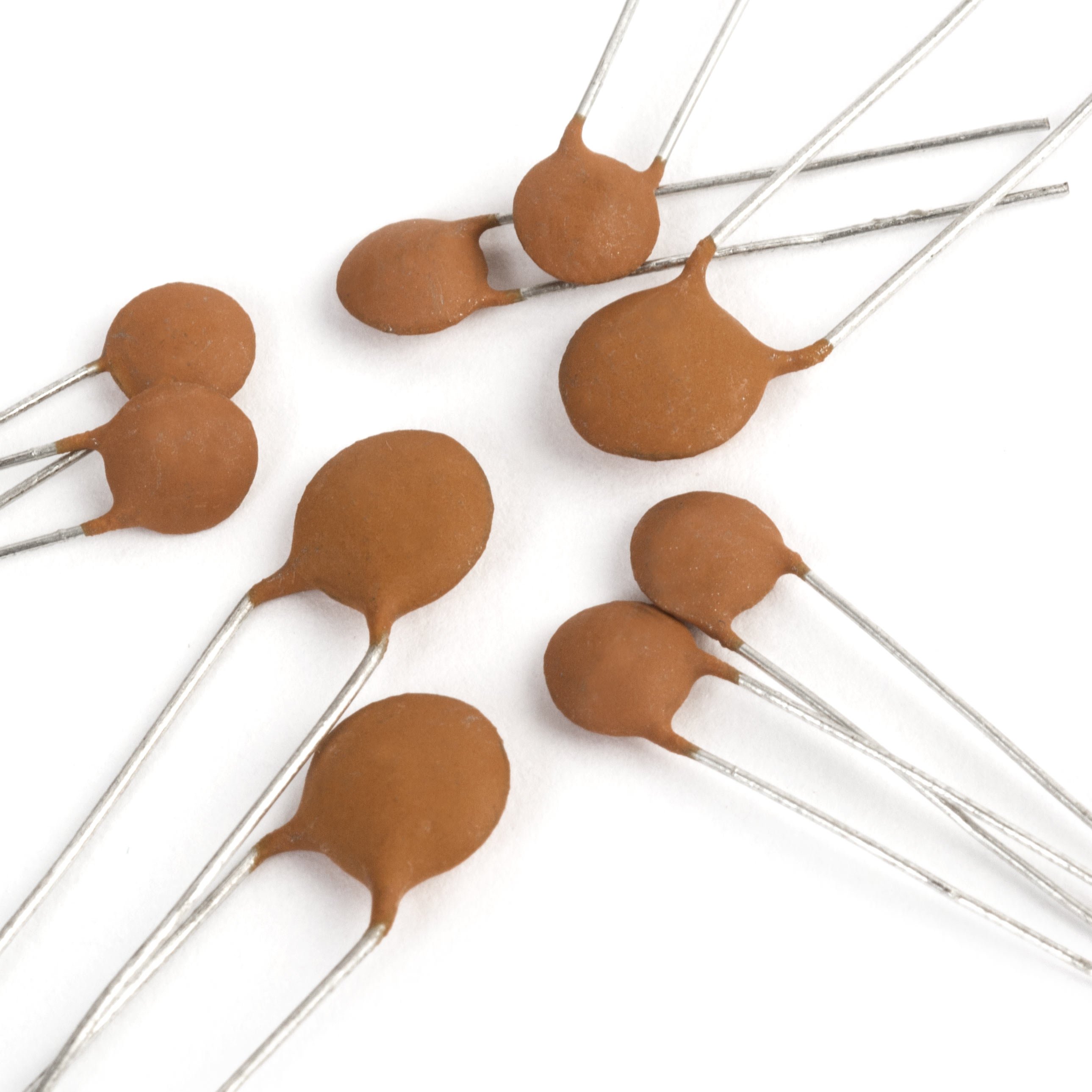How a tone control works
An overview of how a tone control works.
IN THIS ARTICLE
| • Control pots and tone • Capacitors and tone • Keep "highs" with a treble bypass cap |
This information builds on our "Which control pot to choose" article, which explains how a volume control works. You'll want to read that first. In our Which control pot to choose article, we explain how a control pot lets some of your guitar's high frequencies escape to ground instead of getting to the amp. This affects your tone. For example, switching from 250K to 500K pots will mean a brighter sound. A capacitor allows much more of the high frequency sound to escape to ground. Cap's are like a filter: they let the highest frequencies pass, but resist lower frequencies. Connected to the signal and ground wires as shown here, a capacitor would have a big impact on tone (reducing treble), but that impact would be uncontrolled. Now if we add a control pot, we have a tone control: it can dial-in the amount of the signal that gets to the capacitor, so the cap's treble-removing effect is variable. As you open up the pot, more signal goes to the cap. Here's an idea you may want to look into: a "treble bypass cap." Here, a capacitor bridges the input and output lugs on a volume pot; this allows the high frequencies to bypass the pot and stay in the signal. Lower frequencies are blocked by the cap, and are controlled by the pot. Higher and lower capacitor values will have more or less influence on your sound. For details, read our online article, Understanding Guitar Wiring. Also see our DVDs, How To Wire a Fender Guitar and How To Wire a Gibson Guitar.The control pots you choose affects your tone
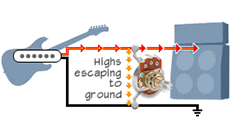
A capacitor affects tone more dramatically
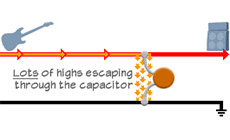
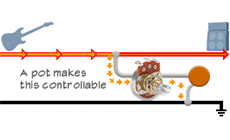
Want to keep all the highs
